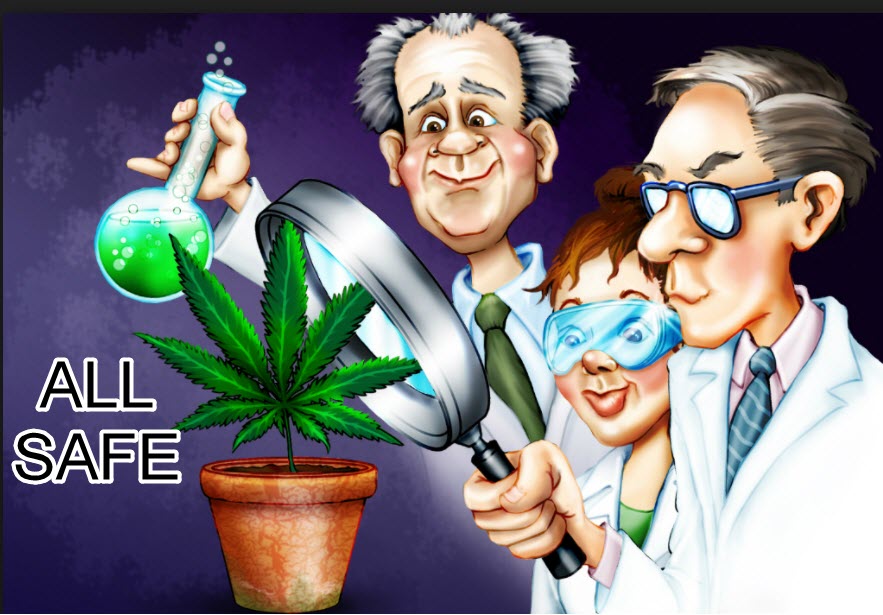11 Surprising Findings From The Biggest Study On Cannabis Ever Done
The Largest Cannabis Survey Ever Done Revealed These Amazing Facts from CannabisNet on Vimeo.
Despite more legal access to cannabis, there are still so many things we don’t fully understand about the plant. However, anecdotal evidence about the potent healing properties of cannabis on hundreds of different illnesses continues to rise, and more people are changing their perceptions about it.

Since November’s elections, 20% of the American population now live in a state where recreational cannabis is available, while an even greater percentage of the population live in states where there is access to medical cannabis in one form or another. However, scientifically speaking, there is still so much we don’t know about cannabis.
Last week, the most comprehensive report on cannabis was released by the National Academy of Sciences, Engineering, and Medicine. Currently there is no other report that discusses so thoroughly what we do and do not know about cannabis - and all of the information is up to date. The team behind the report is composed of representatives of the country’s top educational institutions. They used data from over 10,000 studies, and from these the team drew over 100 findings. More than anything, the report tells us that that there is still so much that isn’t known or understood about cannabis and how it works in the human body.
“Really, most of the therapeutic reasons people use medical marijuana aren’t substantiated beneficial effects of the plant,” says Sean Hennessy, part of the 16 scientists that performed the review and a professor of epidemiology at the University of Pennsylvania. Hennessy also adds that cannabis uses were ““limited evidence or insufficient evidence.”
The 400-page report calls for more research on the medicinal benefits of cannabis as well as its cannabinoids. It also states that there are large gaps when it comes to what we currently know about the plant. The committee behind the report found substantial evidence in the effectivity of cannabis in treating chemo-caused nausea, chronic pain, and muscle spasms caused by MS. However they also found that there was a lack of evidence in other illnesses such as epilepsy, ADHD in children, and increasing appetite in patients of HIV/AIDS.

Here are the 11 most surprising findings about cannabis from the report:
There is significant evidence that cannabis is effective in treating chronic pain. It’s also the most common reason people use medical cannabis, based on the report. The team also concluded with certainty that cannabis is useful in preventing and treating nausea caused by chemotherapy and muscle spasms caused by MS.
Children are more susceptible to accidentally consuming pot in states which have legalized cannabis.
The researchers found evidence that cannabis use increases the risk for automobile accidents.
They found moderate evidence which says that cannabis use isn’t linked to an increased risk in head and neck cancers or lung cancers, which are associated with smoking tobacco. Surprisingly they did find some evidence which suggests that chronic cannabis users may be at higher risk for developing testicular cancer.
There is no evidence that cannabis use can lead to cardiovascular problems although there was little evidence that smoking cannabis may increase the risk of a heart attack.
There is insufficient evidence that cannabis has anti-inflammatory properties.
Substantial evidence shows that regular cannabis users may be at higher risk for developing chronic bronchitis, however there is no evidence that shows that cannabis use will or won’t add to the risk of asthma, COPD, or other respiratory conditions.
Some evidence suggests that there’s a connection between prenatal cannabis use, or when pregnant women use cannabis, and low birth weight. However there is inadequate evidence that that cannabis use leads to complications in pregnancy or that use would increase the time a baby would have to spend in a neonatal ICU.
Evidence also shows that frequent use leads to added risks of developing schizophrenia, which is a concern for those who are already at risk for developing this mental disorder in the first place.
There is limited evidence associating cannabis use with slower academic achievements, although this shows to be particularly true for users who start cannabis use at adolescence.
The most important conclusion of the massive study is that definitely there is much more research needed for cannabis. It’s also important to remember that just because the study says there is an increased risk, doesn’t mean that using cannabis will actually cause that risk.
Today it still remains difficult to conduct research on pot, because the DEA still keeps it at a Schedule 1 drug. This makes it almost impossible for researchers to have the same kind of access to cannabis varieties that people use for medicine. The same is true even in states which have legalized marijuana - federal law prevents researchers from using medicinal cannabis.
OTHER STORIES YOU MAY ENJOY..
7 NEW STUDIES ON MARIJUANA RELEASED, CLICK HERE.
OR..

20,000 DOCTORS STUDY MARIJUANA, CAN'T FIND ANY PROBLEMS, CLICK HERE.






